Contents
Hygrocibe Beautiful is an edible representative of the Hygrophoraceae family, order Lamellar. The Latin name of the species is Gliophorus laetus. You can meet other names: Agaricus laetus, Hygrocybe laeta, Hygrophorus houghtonii.
What does a hygrocibe look like Beautiful
In order not to collect inedible specimens in the basket, it is necessary to familiarize yourself with the structural features of the Hygrocybe Beautiful.
The mushroom is not large in size. The diameter of the cap ranges from 1 to 3,5 cm. At first, the cap is convex, as it grows older, it opens, becoming flattened or depressed. The color of the cap varies from lilac gray to wine gray with an olive overflow. Old specimens develop reddish-orange or reddish hues. The surface is smooth, mucous.
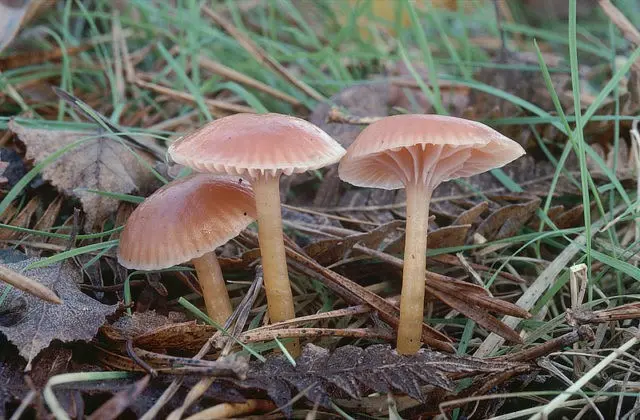
The ring on the leg of the hygrocibe Beautiful is missing
The color of the pulp is slightly lighter than the color of the cap. Mushroom smell is weak. The taste is also unexpressed.
The length of the stem is from 3 to 12 cm, the thickness is 0,2-0,6 cm. The color is identical to the color of the hat, usually a grayish-lilac hue predominates. The leg is hollow inside, the surface is smooth, mucous.
Plates form under the cap. They grow to the leg or descend on it. The edges of the lamellar layer are even, the color is identical to the color of the cap, the edges may differ in pinkish-lilac tones.
Spores ovoid or elliptical.
Where does hygrocybe grow Beautiful
This type of mushroom is found in Europe, Japan and America. Prefers humus soil, grows in coniferous and mixed forests, loves moss or grass bedding. Most often grows in groups, found in thickets of shrubs.
The fruiting period falls on the summer months. The first copies are found in July, the last – in September.
Is it possible to eat hygrocybe Beautiful
This type of small mushroom is often mistaken for poisonous, so it is collected very rarely.
False doubles
Hygrocibe Beautiful can be confused with other representatives of the species:
yellow-green has a slightly large size. The diameter of the cap is from 2 to 7 cm. The bright lemon-green or orange-yellow color of the mushroom is the main difference from the Hygrocybe Beautiful, which has olive-lilac shades. There is a yellow-green representative infrequently, common in Eurasia and North America. It has low taste, so it is rarely used for food. The season of appearance is from May to October. Grows singly or in small groups. You can find them in forests, meadows;
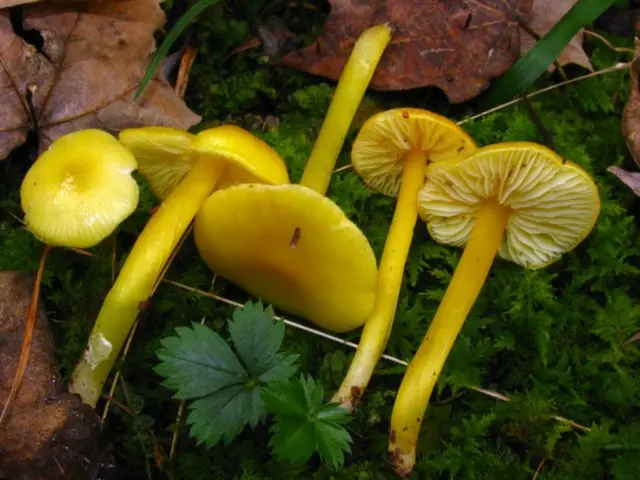
A distinctive characteristic of yellow-green hygrocybe is a bright lemon color.
false conical also differs in large sizes. The diameter of the cap varies between 3,5-9 cm. The color is reddish-orange, yellowish. The color of the stem is slightly lighter, may be lemon yellow. Blackness appears at the site of injury. The mushroom does not have a pronounced taste and aroma. Refers to poisonous specimens. Its use in food is fraught with mild indigestion;
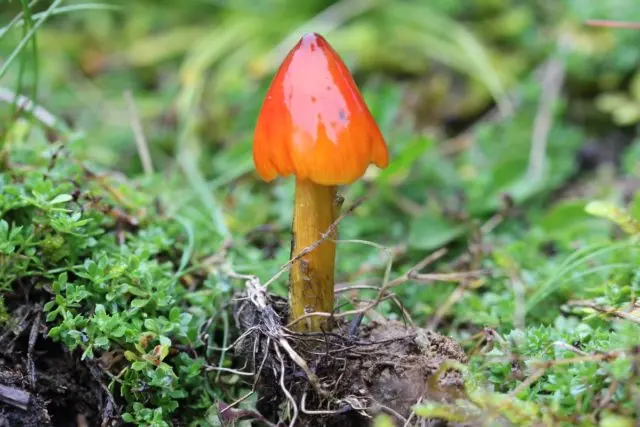
False-conical hygrocybe – a poisonous member of the family
False-conical hygrocybe – a poisonous member of the family
meadow has a flat-conical hat ranging in size from 2 to 10 cm, orange. At high humidity the surface is slippery. The leg is fragile, fibrous. The plates are slightly lighter than the entire surface. The color of the spore powder is white. It occurs in meadow glades, on the edges of the forest, bears fruit from September to November. Refers to conditionally edible specimens;
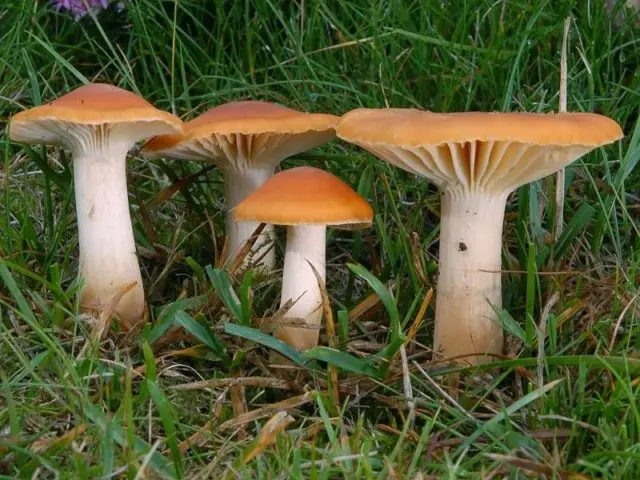
Conditionally edible mushroom – meadow hygrocybe
the crimson variety is distinguished by a reddish-crimson hue, in some places turning into orange. Representatives of this species are found everywhere in wet areas.
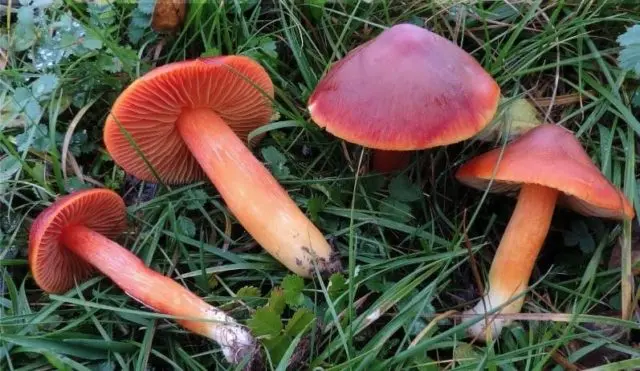
Mushrooms are characterized by good taste, so they can be fried and canned
Use
It is recommended to boil for at least 20 minutes, then drain the water, and add the mushrooms to the soup, fry or stew with vegetables. It can be a great substitute for the usual mushrooms in cooking.
Conclusion
Hygrocybe Beautiful is a mushroom that can be used to prepare various dishes. Due to its small size, it is rarely collected, mistaking for poisonous specimens.









